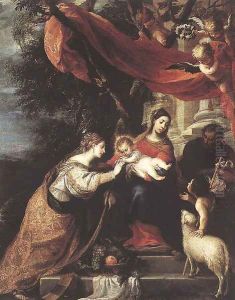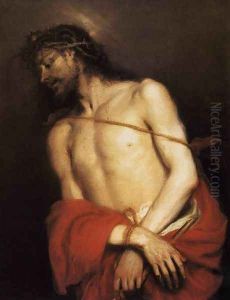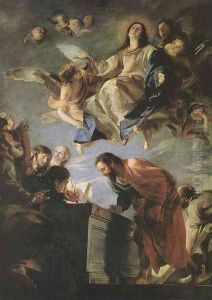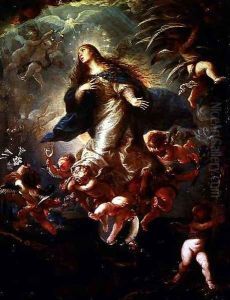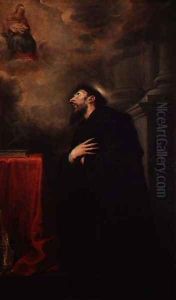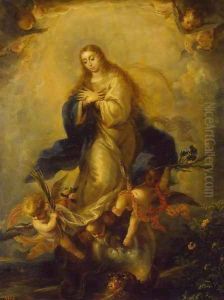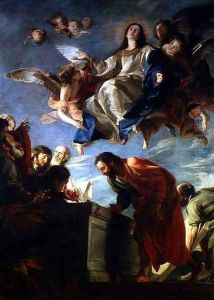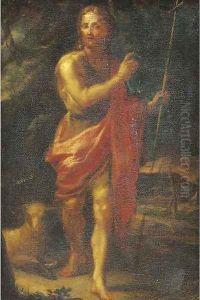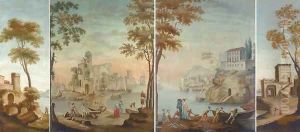Mateo the Younger Cerezo Paintings
Mateo Cerezo the Younger was a distinguished Spanish Baroque painter, born in Burgos, Spain, in 1637. He was the son of Mateo Cerezo the Elder, from whom he received his initial training in the arts. His father was also a painter, which provided a fertile environment for the young Cerezo to develop his burgeoning talent. Despite his relatively short life, Cerezo achieved considerable acclaim for his skillful handling of religious themes and portraits, demonstrating a remarkable proficiency in the use of light and shadow, which became a hallmark of his work.
Cerezo moved to Madrid in his early twenties, which was a pivotal moment in his career. In Madrid, he was exposed to the works of great masters such as Titian, Rubens, and Van Dyck, whose influence is evident in his approach to composition and color. He was particularly admired for his ability to convey the textures of fabrics and the subtle nuances of facial expressions, imbuing his subjects with a lifelike presence. His works often featured a dramatic use of chiaroscuro, a technique he utilized to great effect, enhancing the emotional depth and spiritual intensity of his religious compositions.
Among his most notable works are 'The Ecstasy of St. Francis', 'The Immaculate Conception', and 'St. Raymond of Peñafort'. These paintings exemplify Cerezo's mastery in portraying divine and mystical subjects with a profound sense of realism and devotion. His portraits, too, were highly regarded, celebrated for their elegance, detail, and psychological insight.
Unfortunately, Mateo Cerezo the Younger's career was cut tragically short when he died in 1666, at the age of 29. Despite his brief career, he left behind a legacy that has secured his place among the notable figures of the Spanish Baroque period. His works continue to be studied and admired for their beauty, technical skill, and emotional depth, offering insight into the religious and cultural milieu of 17th-century Spain.
